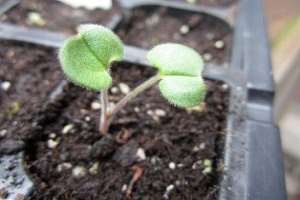By Richard Jauron
With winter’s cold and ice here, spring planting might not exactly be front-of-mind. But this is a perfect time to get a jump start on spring by germinating and starting seedlings indoors, which later can be transplanted outside for optimal growth during warmer weather.

Iowa State University Extension and Outreach horticulturists can help answer queries regarding indoor germination and growth of seedlings. To have additional questions answered, contact the ISU Hortline at 515-294-3108 or hortline@iastate.edu.
What are some good sources of flower and vegetable seeds?
Flower and vegetable seeds can be purchased at local garden centers and other retailers. They’re also available from mail-order companies. Mail-order sources include Stokes Seeds (www.stokeseeds.com), Harris Seeds (www.harrisseeds.com), Park Seed (www.parkseed.com), Johnny’s Selected Seeds (www.johnnyseeds.com), Seed Savers Exchange (www.seedsavers.org) and many others.
What type of germination medium should be used to start seedlings indoors?
The germination medium should be lightweight, porous and free of pathogens. Excellent seed-starting media are commercially prepared soilless mixes, such as Jiffy Mix. Use a high quality, well-drained potting mix when transplanting seedlings into individual pots or cell packs.
Which types of containers can be used to start seedlings indoors?
Various containers can be used to germinate and grow transplants. Gardeners can purchase flats, trays, cell packs, pots, compressed peat or coir pellets, and other commercial products. Cut-off milk cartons or plastic jugs, paper cups and egg cartons also can be used to start seeds. Previously used flats, trays and pots should be cleaned and disinfected before use. Wash the containers in soapy water, then disinfect them in a solution of one part chlorine bleach and nine parts water. Holes should be punched in the bottom of milk cartons, jugs, paper cups and similar containers to allow for drainage.
Do I need to purchase a heat mat to successfully germinate seeds indoors?
Most seeds germinate best when the medium temperature is consistently 70 to 75 degrees Fahrenheit. Placing containers in a warm location in the house, such as on top of a radiator or near a heat register, usually works fine. In cool environments, electric heating cables or mats can be used to insure warm medium temperatures.
Are Grow Lights necessary to successfully grow seedlings indoors?
It isn’t necessary to have ?Grow Lights.” A standard fluorescent shop fixture containing two 40-watt tubes (one cool white and one warm white) is inexpensive and provides adequate light. The fluorescent lights should be no more than 4 to 6 inches above the plants. They should be lit 12 to 16 hours per day. A simple timer can be used to turn the lights on and off.
Source: astate.edu